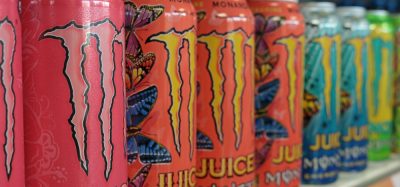All you need to know about bioengineered food disclosure compliance
Posted: 9 June 2021 | Rachel Lowe, Sam Jockel | No comments yet
Attorneys Samuel Jockel and Rachel Lowe explain what regulated entities need be mindful of with the upcoming NBFDS compliance deadline.


With a mandatory compliance deadline of 1 January 2022 right around the corner, manufacturers, importers and certain retailers have just several months remaining to ensure products labelled for US retail sale comply with the US Department of Agriculture (USDA) Agricultural Marketing Service’s (AMS) mandatory National Bioengineered Food Disclosure Standard (NBFDS).
In this article, Sam Jockel and Rachel Lowe from Alston & Bird explain what regulated entities must be aware of ahead of the looming compliance deadline.
What is the NBFDS and who is subject to its requirements?
For the first time on the federal level in the US, manufacturers, importers and retailers that package or sell food in bulk will be required to disclose the presence of bioengineered food or food that contains bioengineered food ingredients on products labelled for US retail sale.
The NBFDS’s mandatory disclosure requirement applies to both human food subject to the labelling requirements under the Federal Food, Drug and Cosmetic Act, and some products under the jurisdiction of the USDA’s Food Safety and Inspection Service. Importantly, the NBFDS will be enforced by the USDA AMS, not the Food and Drug Administration (FDA).
How can regulated entities determine whether their foods require a disclosure?
AMS’s regulations define ‘bioengineered food’ to mean, in part: “Food that contains genetic material that has been modified through certain laboratory techniques and for which the modification could not be obtained through conventional breeding or found in nature.”
This definition expressly excludes incidental additives and foods for which “the modified genetic material is not detectable pursuant to [specific standards]”. Certain highly refined foods like oils may not require disclosure, for example, if the genetic material from a bioengineered ingredient – often corn – is not detectable.
AMS has released specific guidance on how to demonstrate that modified genetic material is not detectable, which may be important in determining whether refined ingredients produced from bioengineered crops are exempt from the disclosure requirement.
AMS’s regulations include a ‘List of Bioengineered Foods’ that regulated entities should reference to determine whether they need to make a bioengineered food disclosure. Importantly, companies must keep records of compliance if a food or ingredient is on the List of Bioengineered Foods and/or the entity has actual knowledge that the food is bioengineered.
What are the options for disclosure?
Once a determination is made that a food is bioengineered and requires labelling under the NBFDS, regulated entities can choose between one of four options to disclose the presence of bioengineered food (text, symbol, electronic/digital link or text message), each with its own specific requirements. The mandatory disclosure options use the term ‘bioengineered food’, as AMS decided not to adopt the use of other terms, such as ‘GMO’ or ‘GE’ (genetically modified organism/genetically engineered). The regulations also allow entities to voluntarily disclose the presence of bioengineered foods through a separate disclosure requirement indicating that the food is “derived from” bioengineered crops or food on the List of Bioengineered Foods.
What are the risks of noncompliance?
The USDA’s enforcement authority over regulated entities’ failures to disclose bioengineered foods as required is limited to (1) investigations, and (2) making public either (a) the summary of the results of an audit or (b) the summary of the final results of an investigation at the conclusion of a hearing.
The USDA cannot order recalls of products that were not properly labelled with an NBFDS disclosure. Noncompliance with the NBFDS may also carry potential litigation risk from both consumers and competitors.
What strategies can companies use to comply with the requirements?
As the mandatory compliance date approaches, regulated entities should work to develop a strategy to ensure compliance with the NBFDS. We suggest beginning with an evaluation of each product’s bioengineered food status and determining whether existing records are sufficient – or whether additional information is needed from ingredient suppliers – to inform a disclosure decision.
Once a determination is made that a food requires a bioengineered food disclosure, regulated entities should determine what disclosure option will be used and how to comply with those disclosure requirements. As recordkeeping is key to compliance under the NBFDS, regulated entities should ultimately ensure a documentation or data system is in place to support continued compliance with the NBFDS.
About the authors


Rachel E. K. Lowe is a Partner in Alston & Bird’s Los Angeles office. She is a litigator who defends clients in the food and beverage, retail and telecom industries facing false advertising and privacy class actions, among other complex commercial litigation.











